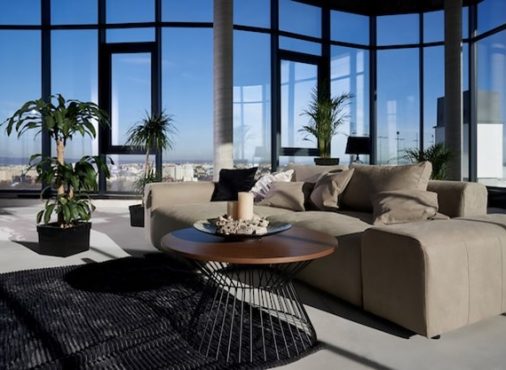As the world of luxury real estate becomes increasingly interconnected, global investors are expanding their horizons and evaluating emerging markets alongside traditional investment hubs. Mumbai, once considered a local favourite, is now gaining attention among high-net-worth individuals (HNIs) seeking strong returns, sustainable growth, and strategic long-term investments.
This comprehensive guide on ROI comparison explores how Mumbai compares to other global luxury real estate destinations, such as New York City, London, and Dubai, across critical parameters like capital appreciation, entry cost, rental yield, and currency impact.
Why Global Investors are Comparing Mumbai
Global investors don’t make decisions based solely on current price points; they look at the macroeconomic context, growth trajectory, and future market potential. In that respect, Mumbai offers multiple advantages that place it on the radar of discerning investors.
Economic Growth
Mumbai remains the economic heartbeat of India, hosting key industries such as finance, entertainment, real estate, and technology. Its consistent GDP contribution and rapidly expanding startup ecosystem create a stable foundation for luxury real estate demand.
Also Read: Impact of Double Taxation Avoidance Agreement (DTAA) on NRI Property Income
Post-COVID Capital Rebalancing
Post-pandemic, there has been a noticeable shift in capital from Western to Eastern markets. Investors are seeking regions with higher growth potential and economic resilience. Mumbai, with its rising disposable income and aspirational homebuyers, has benefitted from this eastward investment flow.
Entry Cost and Yield Metrics
For investors evaluating real estate, the entry cost and potential yield are critical metrics. These determine how quickly you can enter a market and how much passive income you can expect over time.
Price per sq.ft.: Mumbai vs Global Cities
- In prime areas like Bandra-Kurla Complex (BKC), the average property price is ₹60,700 per sq. ft., significantly lower than Central London or Downtown Dubai, where prices can exceed ₹1 lakh per sq.ft.
- While Mumbai offers relatively lower entry costs, its luxury real estate is catching up due to limited supply and increasing demand.
Rental Yields
- Rental yields in Mumbai average 2-3%, which is lower than Abu Dubai (6-8%).
- Despite lower yields, Mumbai’s steady appreciation offsets this gap for long-term investors.
Transaction Costs and Maintenance
Investing in property is more than just purchasing square footage; it involves recurring costs and upfront transaction charges that affect the real ROI. Understanding these costs in Mumbai vs global cities is key to informed investing.
Mumbai’s Transaction Costs:
- Stamp Duty: 5% for female buyers and 6% for male buyers within the municipal limits of any urban area.
- Registration Fee: 1% of the property value.
- GST only applies to under-construction properties (1% for affordable housing and 5% for non-affordable housing).
- Maintenance: The maintenance cost is between ₹10 to ₹20 per sq. ft in luxury projects due to premium facilities and management costs.
Global Comparison:
Cities like Dubai have zero stamp duty and income tax, making them extremely attractive for investors focused on short-term gains. However, Mumbai’s regulatory reforms have streamlined transactions, improving the overall transparency and ease of purchase.
What This Means for ROI:
Although Mumbai’s transaction costs are higher, the steadier appreciation and robust demand in prime zones make up for it. When investing for the long term, consistent growth and lower volatility are often more beneficial than aggressive short-term gains.
Capital Appreciation Trends
For long-term investors, capital appreciation is one of the most critical indicators of real estate performance. Mumbai’s luxury real estate market has consistently demonstrated strong growth, driven by strategic development, land scarcity, and rising demand for ultra-luxury living.
- Mumbai: Luxury property prices in Mumbai have appreciated significantly, driven by limited land availability and robust infrastructure development. According to Knight Frank, Mumbai ranked 7th in luxury home price appreciation globally, with a 6.1% increase in the last quarter of 2024.
- Dubai: Recorded a 16.9% increase in luxury property prices, benefiting from an influx of ultra-rich residents and high demand for luxury real estate.
- Orange County, USA: Orange County recorded a 9.3% increase in luxury property prices, reflecting its appeal as a desirable location for luxury living in the U.S.
Impact of Infrastructure, Scarcity of Land, and Luxury Supply Gap
Mumbai’s upward trend in capital appreciation is driven by three primary factors:
- Infrastructure Projects: The ongoing Coastal Road Project, Metro Line 3, Navi Mumbai International Airport, and the Mumbai-Trans Harbour Link are expected to unlock new corridors of luxury living, enhancing connectivity to core business districts.
- Scarcity of Land: Prime locations like South Mumbai, Bandra West, Pali Hill, and Worli are constrained by limited land availability, making new developments rare and thus more valuable over time.
- Luxury Housing Supply Gap: There is a clear mismatch between demand and supply in the ultra-luxury category. The number of buyers seeking well-designed, high-end residences outpaces the availability of such projects, leading to consistent price appreciation.
Also Read: Why Waterfront Properties Are a Top Choice for Luxury Investors
Currency and Economic Factors
When investing in global real estate, currency fluctuations and macroeconomic dynamics significantly influence overall returns, especially for foreign investors and NRIs.
INR vs USD, GBP, AED Volatility
The Indian Rupee (INR) has historically been more volatile compared to major global currencies like the USD, GBP, and AED. For example:
- The INR has depreciated against the USD by 3.5% over the past 20 years.
- Against the AED and GBP, the rupee has experienced similar downward trends, reflecting global economic volatility and inflationary pressures.
However, this volatility creates entry-point advantages for NRIs. By investing when the rupee weakens, NRIs can acquire more square footage per dollar or dirham.
Political Risk and Capital Protection Analysis
India offers a relatively stable political environment, especially in comparison to fast-moving speculative markets. Key policies that support capital protection include:
- RERA (Real Estate Regulation and Development Act) ensures delivery timelines and legal accountability.
- Benami Transactions (Prohibition) Act and banking reforms that enhance financial transparency.
- Judicial recourse and a maturing legal system to resolve disputes.
Compared to Dubai, where political and market risks are closely tied to oil markets and regional volatility, or to New York, where tax and policy shifts can impact returns, Mumbai presents a safer political and regulatory climate for patient capital.
Conclusion
Mumbai has emerged as more than just India’s financial capital; it is now a compelling investment location on the global real estate map. With its steady capital appreciation, transformative infrastructure development, and a tight supply-demand dynamic in the luxury segment, the city presents a strong opportunity for long-term, sustainable ROI.
Looking to capitalise on Mumbai’s rise as a global luxury investment destination? Explore Rustomjee’s residential properties, designed for those who value privacy, space, and high-end living.
FAQs
- Is Mumbai a better long-term investment compared to Dubai or London?
Yes. While Dubai may offer higher short-term yields, Mumbai provides more stable, appreciation-driven returns backed by strong end-user demand and limited supply in premium micro-markets.
- How does the Indian legal system protect real estate investors today?
India has significantly improved transparency and buyer protection through RERA, ensuring developer accountability, legal clarity, and timely delivery. This makes Mumbai a secure and regulated environment for property investments.
- How does currency fluctuation impact NRI investments in India?
While the INR is more volatile than the USD or GBP, NRIs can leverage this to their advantage by investing during rupee depreciation. This increases buying power and enhances long-term returns when repatriating their income.








